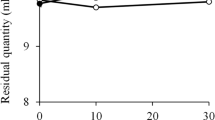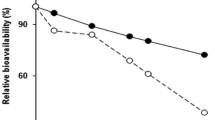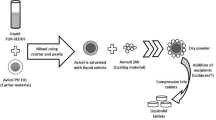Abstract
IT has recently been reported1 that when tablets of synthetic œstrogens are implanted subcutaneously into bovines, the outer or 'cortical' layer of the tablets becomes infiltrated with a structure apparently composed of relatively insoluble protein. The formation of this structure, for which the name 'ghost' was proposed, should not be confused with the phenomenon of encapsulation of the tablet within a sac of fibrous or connective tissue, which was considered by Goist et al.2 to cause a considerable decrease in absorption from tablets implanted into humans. Whatever may be the effect of encapsulation, it was considered likely that ghost formation would retard absorption, and experimental evidence that this is so has now been obtained.
This is a preview of subscription content, access via your institution
Access options
Subscribe to this journal
Receive 51 print issues and online access
$199.00 per year
only $3.90 per issue
Buy this article
- Purchase on Springer Link
- Instant access to full article PDF
Prices may be subject to local taxes which are calculated during checkout
Similar content being viewed by others
References
Folley, S. J., NATURE, 150, 403 (1942).
Geist, S. H., Walter, R. I., and Salmon, U. J., Proc. Soc. Exp. Biol., 43, 712 (1940).
Emmens, C. W., Endocrin., 28, 633 (1941).
Forbes, T. R., Endocrin., 29, 70 (1941).
Author information
Authors and Affiliations
Rights and permissions
About this article
Cite this article
FOLLEY, S. Retarding Effect of Ghost Formation on Absorption from Subcutaneously Implanted Tablets of Hexœstrol. Nature 150, 735–736 (1942). https://doi.org/10.1038/150735c0
Issue Date:
DOI: https://doi.org/10.1038/150735c0
This article is cited by
-
Tablet Absorption and Ghost Formation
Nature (1943)
Comments
By submitting a comment you agree to abide by our Terms and Community Guidelines. If you find something abusive or that does not comply with our terms or guidelines please flag it as inappropriate.



